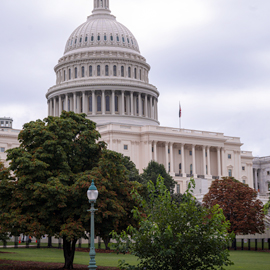
We live in a global economy and have for more than a century. Our role as a dominant global power has been well entrenched since World War II, even though that role has shifted somewhat over time. As such, events that take place halfway around the world — whether implemented or simply threatened—still impact our markets economically and logistically.
In many industries—from car manufacturing to coffee production—operations are so entwined that the final product or service may have been initiated in one country, been partially processed in another and ultimately assembled, packaged and shipped from yet another. That’s why various political and economic actions, including the recent trade war prompted by the Trump administration tariffs, can have such a profound and widespread financial impact across countries.
Whether you believe that tariffs are good or bad, they can lead to inflation, supply chain disruption and more. The resulting price increases are never easy to communicate to distributors, customers and other affected parties. But if handled properly, it’s possible to maintain your loyal customers and effectively differentiate your business to the point of even garnering additional business.
10 tips for how to announce price increases to customers
- Empathy – While you shouldn’t need to apologize for factors that are outside of your control, it’s important to put yourself in your customers’ shoes. Position the increase as a last-resort action based on a challenging situation that we’re all in together. Recognize that this is a difficult time. A heartfelt message can go a long way.
- Transparency — This is not a time for creative marketing jargon. Rather, it’s beneficial to be as honest and detailed as possible about what changes you must make and why. Use examples, if possible, to illustrate the impact of the cost increases.
- Timeliness — A price increase is never good news, but it’s helpful to provide as much notice as possible so customers can plan accordingly. Perhaps there’s an incentive you can offer to customers so they can purchase early or in bulk amounts out of existing inventory in advance of the tariffs taking full effect.
- Flexibility — Explore as many cost-offsetting options as possible by searching for material alternatives, vendor substitutions, manufacturing changes—any type of change that could result in lower costs without significantly compromising quality. Communicate that you are continuing to explore ways to lower costs.
- Value Reinforcement — This is a good time to communicate your company’s competitive advantages and remind customers of the benefits of doing business with you. It could be your reputation for quality or on-time delivery or even your impeccable customer service or technical support. Know how you stack up against the competition and reinforce those attributes. Does your product last longer? Does it require less maintenance or improve efficiency?
- Pricing Strategy Options — If possible, try creating various pricing tiers, possibly including bundled pricing to offer less-expensive options to customers. There may be an option for payment installments without interest. Or, perhaps, loyalty discounts can be offered. Be open to alternatives that your competitors are sharing, or which customers bring to you.
- Improvements — Now would be a good time to roll out any planned service enhancements or quality upgrades so that customers feel like they are getting some type of bonus in exchange for paying more. Limited-time offers for special upgrades, such as a premium finished or expedited order, may also be a way to build goodwill even during a difficult time.
- Consistency — Whether communications are positive or negative, it’s important that they remain aligned with your brand and market position. Message training with all customer-facing employees could prove valuable so they are explaining price increases the same way.
- Frequency/Comprehensiveness — Communicate the price increases through multiple channels, such as a website, email, social media and more traditional communications. For your most significant customers, a personal phone call should be made to explain the price increase. You may also want to include a notification on printed or electronic invoices.
- Responsiveness — Understand that, regardless of how thorough your explanation is, customers will likely still have questions. Some may also want to vent their frustrations, even if they understand the necessity of the situation. Providing a clear path for feedback and two-way communication will go a long way in improving customer relationships. If possible, provide a specific name and phone number or email address of a person your customers can contact.
Unfortunately, this isn’t the first time in recent history that we’ve had to address unplanned price increase notifications to customers. For many of us, the COVID-19 pandemic is still clearly visible in our rear-view mirrors. The erratic supply chain disruptions, product shortages and wildly fluctuating prices affected industries of all types and sizes.
If we learned anything from the economics of that situation it is that, as a market, we are resilient, and we can adapt to a new normal. Using the right messaging, tone, consistency and transparency in our communications can make a real difference in maintaining and building customer loyalty, regardless of what is happening outside of our control.
Contact us if you’d like to learn more about how Falls can assist you in your marketing or public relations needs.
